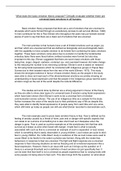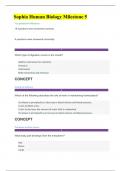Essay
Biological Psychology Essay on Basic Emotion
- Course
- Institution
1000 word limit essay on universal basic emotion for 2nd year 'Biological Psychology' module. Answering the question: 'What does basic emotion theory propose? Critically evaluate whether there are universal basic emotions in all humans'.
[Show more]








